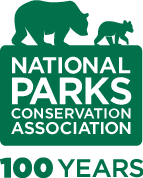A Century of Impact
Restoring our Waters


A Century of Impact


The Buffalo National River flows freely for 135 miles through the Ozark Mountains, cutting its way through massive bluffs of limestone and sandstone. Designated in 1972, the Buffalo was America’s first national river and is one of the few remaining undammed rivers in the Lower 48. As many as 1.8 million people visit the Buffalo annually, supporting 1,200 jobs and pumping $90 million into the local economy.
Over its course, the Buffalo runs both fast and slow, attracting visitors drawn by the challenge of whitewater or the promise of a peaceful float through a picturesque landscape — and the allure of the park’s waterfalls, wildlife and wooded hollows.
In the early 2000s, all of that was threatened by a proposed dam on Bear Creek, one of the major tributaries flowing into the Buffalo. Though the dam was to be sited outside of park boundaries, the impacts would be felt inside the park — and NPCA saw the opportunity to not only stop an ill-conceived project but also to set a precedent for parks to control negative impacts beyond their borders.
Let there be no mistake about our attitude in favor of the utilization of the nation’s waters for irrigation, power and transportation. But there is a place for everything, and the place for these is not the comparatively minute areas which constitute our national museums of the native American wilderness.
For two years, NPCA worked with the Park Service, American Rivers, local partner groups and a hydrologist who confirmed the harm the reduced flow would have on endangered mussels within the park. The campaign worked — at first. The permit was denied, only to be reversed when a new administration was elected. NPCA and its allies mounted a legal challenge that resulted in a Department of Justice ruling that decided the National Park Service did indeed have the jurisdiction to make a determination on the permit — an important precedent on watershed protection authority now being used to protect the Obed Wild and Scenic River from a similar proposal.
For NPCA, the importance of protecting park waters is nothing new. In just our second year, we fought off a proposal to dam the Yellowstone River — and have been fighting to protect and restore the nation’s waters ever since.

Fought for restoration plans that maximize freshwater flow to Florida Bay in Everglades National Park
Defended the Buffalo National River from commercial hog farming operations that threatened its waters
Supported the restoration of Olympic’s Elwha River through the removal of the Elwha and Glines Canyon Dams – the largest dam removal in U.S. history
Led efforts to create a marine reserve at Biscayne National Park
Helped to acquire federal funding for wetland restoration at Gateway National Recreation Area’s Jamaica Bay
Fought to protect clean water and wild salmon fisheries at Bristol Bay and Lake Clark National Park and Preserve from upstream large-scale mining proposals
Learn more about NPCA’s work to protect and restore America’s Great Waters in and around national parks across the country.

A Century of Impact
Restoring the “River of Grass”

Make a tax-deductible gift today to provide a brighter future for our national parks and the millions of Americans who enjoy them.
Donate Now